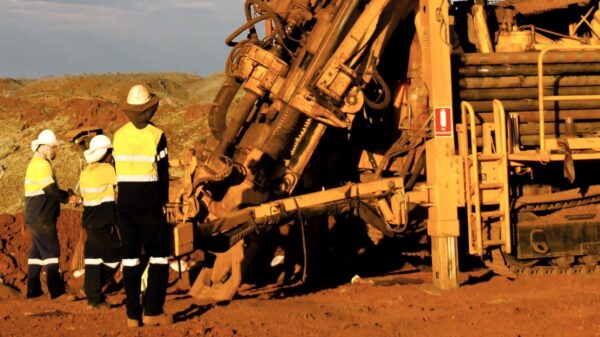Freeman Gold Corp. (TSXV: FMAN) (OTCQB: FMANF) (FSE: 3WU) has brought on GSI Environmental Inc (GSI) for its baseline water quality monitoring program at its Lemhi Gold Deposit in Lemhi County, Idaho.
The company explained that baseline water quality monitoring is a necessary step in the permitting a mine planning process. Water quality data will establish baseline conditions for groundwater and surface water. This will help the company develop the conceptual site model. Freeman will then use these components in a request for a Point of Compliance (POC) determination from the Idaho Department of Environmental Quality (DEQ) and to support mine planning and development.
The POC determination is a critical permit in Idaho that outlines monitoring, sampling, and reporting requirements to ensure mining activities do not negatively impact water quality.
The permitting process requires applicants to establish baseline water quality conditions for surface water and groundwater using Idaho DEQ’s Statistical Guidance for Determining Background Ground Water Quality and Degradation.
To establish background water quality, applicants must collect at least 12 samples from monitoring points. Freeman will complete these 12 samples by the end of 2024. Once complete, the company will be in a position to submit a POC application in 2025 and make progress toward securing one of the major permits required for mine development and operations.
Freeman Gold’s program includes sampling and monitoring at 12 different wells and five surface water monitoring sites. The company has completed eight quarters of sampling at the site over the last two years. It also has four more quarters of sampling scheduled for 2024.
Read more: U.S. Gold Corp acquires environmental quality permit in Wyoming
Read more: U.S. Gold to present at New York’s Current Trends in Mining Finance Conference
Project includes near-surface oxide gold
The project covers 30 square kilometres of highly prospective land and hosts a near-surface oxide gold resource.
Oxide gold is found in rock that has been naturally broken down by exposure to air and water. The gold can be recovered using simpler, cheaper methods like heap leaching because the rock is softer and more porous. This makes oxide gold deposits more straightforward and cost-effective to mine compared to gold in harder, unoxidized rock.
The pit-constrained mineral resource estimate includes 988,100 oz gold at 1.0 grams per tonne in 30.02 million tonnes inferred and indicated. It also includes 256,000 oz Au at 1.04 g/t Au in 7.63 million tonnes inferred.
The recently completed preliminary economic assessment shows an after-tax net present value (NPV) of USD$212.4 million and an internal rate of return (IRR) of 22.8 per cent using a base case gold price of USD$1,750/oz. Additionally, it has an after-tax NPV of USD$345.7 million and an IRR of 31.9 per cent using the spot gold price of US$2,042.60/oz. Also, an average annual gold production of 75,900 oz Au, totaling 851,900 oz Au over a life-of-mine (LOM) of 11.2 years; LOM cash costs of US$809/oz Au; and all-in sustaining cash costs of US$957/oz Au with an initial CAPEX of US$190 million.
Nearby, other significant projects include the Beartrack-Arnett gold project owned and operated by Revival Gold (TSX: RVG) (OTCQX: RVLGF). Furthermore, US Gold Corp‘s (NASDAQ: USAU) Challis property, situated in the same state, is also gaining attention as a promising gold exploration project.
.
U.S. Gold Corp. is a sponsor of Mugglehead news coverage
.














